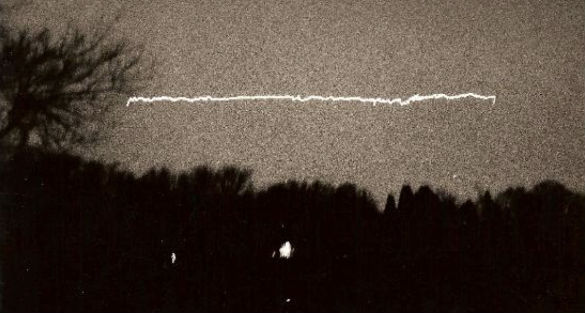Most ufologists are keenly aware of the frequent reports of what people often refer to as “orbs” which lacks much clarity. The term is often used to describe objects that turn out to be everything from Chinese lanterns, to ball plasma, and even navigation lights on aircraft. The term is also used to describe lens flares created from pointing cameras towards a bright light source, an out of focus light, and is also a dust particle that floats in front of a camera with a bright light seen in ghost investigations.
There exists another class of objects that science has yet to fully explain which seem to be a naturally recurring phenomena that are seen in certain geographic areas with increased frequencies (almost nightly) than the objects previously mentioned. In 1973, Piedmont, Missouri experienced a rash of sightings of luminous phenomena and documented by Dr. Harley Rutledge in his book, Project Identification. Dr. Rutledge had a team conduct a field study over a period of years, capturing scientific data, video and photographic evidence in the hopes of learning more about its nature. His summary report of these lights are consistent with other observations in other areas.
Wyatt has done an excellent job in creating a classification system for the variations seen (e.g., colors tend to be blue, yellow/orange, white). The lights vary in size, speed and duration based on the colors noted. White lights are generally seen during warmer months, where yellow/orange lights tend to be seen during cooler months (October through April). The Spooklights, now referred to as “Earthlights” by Wyatt, tend to be 8 foot in diameter (the blue and white ones are 2-4 feet in diameter), travel in straight line paths (east to west or reversed), and can be at ground level and rise to altitudes of several thousand feet. They move at 20 mph, but can also stop and then proceed in their path. The lights can go out and then come back on as they proceed on their path and they generally disappear by fading out.
Every serious UFO researcher and field investigator needs to get a copy of the books mentioned here along with the works of William Corliss on Luminous Phenomena. Corliss has done an excellent job of categorizing, referencing and even illustrating the myriads of types of luminous phenomena observed on the earth. Both Corliss as well as Cox see these objects as naturally occurring phenomena, not alien spacecraft. They are very similar to the lights in Hessdalen, Norway, the Marfa Lights, the Paulding Lights, Crossett Lights, Gurdon Lights and dozens of other areas around the globe and it this author’s opinion that it can explain a vast number of UFO sightings even outside of these geographic areas reported by witnesses as “orbs”.
Similar to the field study conducted by Dr. Rutledge, a scientific field investigation is being planned for the Cloverdale area this fall. We are seeking to secure the best equipment possible (spectroscopes, gravimeters, magnetometers, cameras capturing images in multiple parts of the EM spectrum, and other data collection tools) along with trained users of that equipment to see what we can learn. Plans include the possible use of a drone to see if we can get close-ups of the lights, equipped with sensors. The outcome will be to deliver a report on our findings and sharing our data collected. We have already begun collecting geological data, earthquake zone data, and weather data for the area.
For further information or interest in the study, please contact this author by writing him at ufoxprt@gmail.com.
